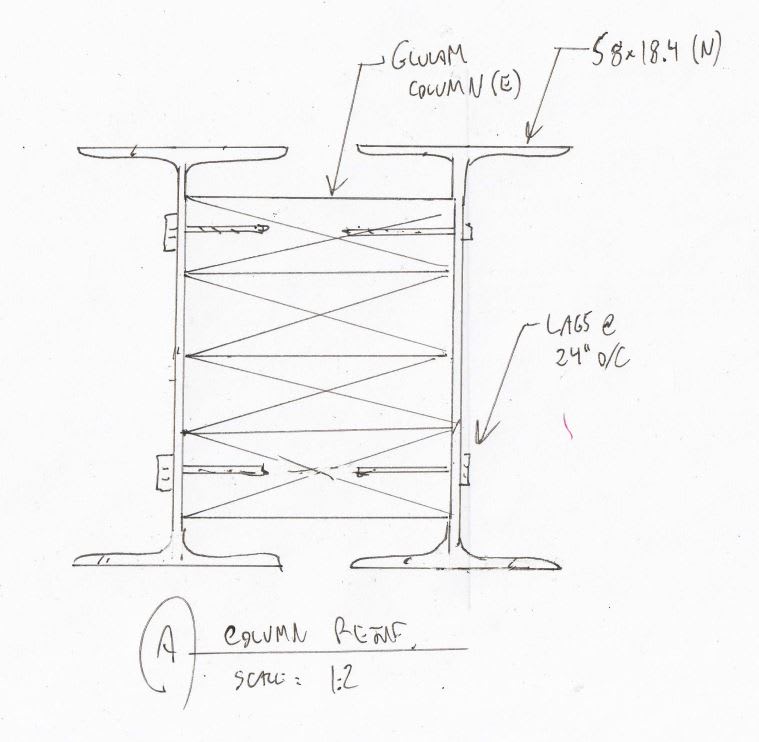BouncedPod
Structural
I am currently working on a project that involves removing the mid-height bracing of a glulam column. The column is 20' overall and attached/braced by the roof framing at the top, and has ceiling framing/bracing at 10' above grade. The project involves removing the ceiling bracing, and increasing the unbraced length from 10' to 20'. I am thinking about adding 2x6 nailers to the narrow face of the column to increase it's overall dimensions. I want to ensure that the existing column and nailers "act" together. I was thinking of sizing the connection between the nailers and the column using shear flow with a constant shear force of 2% of the axial column force. What does everyone else think of my approach?
Attached is a quick sketch of what I am thinking.
Attached is a quick sketch of what I am thinking.

